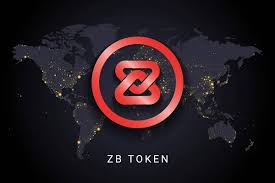In the world of cryptocurrencies, a fork is essentially a change in the blockchain protocol. Since cryptocurrencies operate on decentralized networks, all parties must use the same rules and work in concert to preserve the history of the blockchain. Otherwise, two blockchains are working in parallel in different parts of the network. This phenomenon is also called chain branching.

How forks appear
Random forks happen when different miners find a block almost simultaneously, creating two chains of blocks. Such forks are eliminated quite quickly. As new blocks are added, one chain becomes longer, and the blocks of the second chain become obsolete.
Planned forks occur when developers cannot agree on how the software is supposed to work. The rules for the functioning of the protocol change and a new coin is created.
If the market does not show enough interest in it, the value of the new token drops to zero and it stops being mined. However, the second branch can survive if the new coin has enough followers. In this case, both assets will continue to coexist and develop in parallel.
Scheduled forks can be categorized as soft and hard.
What is a soft fork
Soft forks are usually minor changes to the protocol, are optional, and are backward compatible. In other words, the old rules are not canceled. Users do not need to update the software. It is because the previous versions of the blocks are still recognized by the blockchain. As people move to the new version of the protocol, only one valid blockchain remains.
What is a hard fork
Hard forks occur when changes made are not compatible with previous versions; they are permanent and require all users to update to the latest version. If someone does not update and continues to work, then the chain will branch. It means two incompatible blockchains will arise. At this stage, either both will coexist and work independently, or one blockchain will become dominant.
Some hard forks are consensual, which means that all parties agree to accept a new set of rules.
Popular hard forks
Case 1: When answering the question of what a Bitcoin fork is, many people think of Bitcoin Cash (BCH). The asset appeared in 2017 as a result of a hard fork on the bitcoin blockchain. Cryptocurrency successfully exists to this day.
Bitcoin and Bitcoin Cash share a common history up to block 478 558. Bitcoin Cash emerged from a community controversy over the true concept of cryptocurrency as conceived by Bitcoin’s creator Satoshi Nakamoto. The main reason for contention was the block size and implementation of the Segregated Witness technology.
Case 2: Ethereum (ETH) is a successful branch of the cryptocurrency now known as Ethereum Classic (ETC). It was created after hacking the Decentralized Autonomous Organization (DAO) and stealing $ 50 million in ETH. The Ethereum community pondered how to eliminate the consequences, and the majority decided to hard fork on block 1,920,000. It is how the Ethereum fork appeared.
What is cloning
Cloning is sometimes confused with forks. However, a clone is an exact copy of the cryptocurrency program code, which is launched on a new distributed ledger with minor changes.
Cloning is encouraged on open source platforms such as Github. There you can copy the existing code and change it to fit your needs. Then you can run it and create a completely new blockchain in a clean ledger.
Cloning often leads to innovative developments. For example, you can take the basic bitcoin code, slightly tweak some parameters, and create a new coin based on it. It is how most alternative coins (altcoins) were born.
For example, in 2011, former Google engineer Charlie Lee created Litecoin in this way. He used the original copy of the bitcoin code and changed several parameters such as proof-of-work and block generation rate. It allowed him to increase transaction speed and network scalability, creating a coin that can be used for everyday small expenses.
The future of forks
Forks have a significant impact (both positive and negative) on the cryptocurrency ecosystem. They allow the creation and improvement of cryptocurrencies, but sometimes they lead to crises and conflicts that stir up hostility in the community. As new people come to the cryptocurrency industry with new goals, the role of forks will increase.











